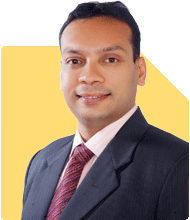Mayank Rautela | Answer |Ask -Follow
HR Expert - Answered on Jul 01, 2021
A management graduate from the Symbiosis Institute of Management Studies with a master's degree in labour laws from Pune University, Rautela has over 20 years of experience in general management, strategic human resources, global mergers and integrations and change management.... more

Respected Sir,
I read your column about facing interviews.
I am suffering from unemployment.
I am a BTech (Electrical) graduate. I earned by degree in 2017 and have been consistently preparing to get a job.
I have cracked GATE 20/21 but did not get a merit rank.
Please, Sir, guide me on how to get a job. I am 25 years old. Please suggest the possible sectors where I will do well.
Please, Sir, knock this problem out for me. I am in dire need of a job.
Thank you, Sir.
Ghanshyam
Hi Ghanshyam.
Don't give up hope!
You are a bright young engineer and there is always a dearth of good engineers.
Keep upgrading your knowledge by doing relevant courses in your field.
I would say most industries are hiring engineers.
With the Make In India initiative, more jobs will open up in the manufacturing sector and that certainly needs electrical engineers.
Explore opportunities in the Middle East as well.
You may like to see similar questions and answers below
Mayank Rautela | Answer |Ask -Follow
HR Expert - Answered on Mar 02, 2021
Abhishek Shah | Answer |Ask -Follow
HR Expert - Answered on Nov 03, 2023
Nayagam P P |10860 Answers |Ask -Follow
Career Counsellor - Answered on May 30, 2024
Krishna Kumar | Answer |Ask -Follow
Workplace Expert - Answered on Jun 06, 2024
Samraat Jadhav |2522 Answers |Ask -Follow
Stock Market Expert - Answered on Dec 23, 2025
Samraat Jadhav |2522 Answers |Ask -Follow
Stock Market Expert - Answered on Dec 23, 2025
Samraat Jadhav |2522 Answers |Ask -Follow
Stock Market Expert - Answered on Dec 23, 2025
Samraat Jadhav |2522 Answers |Ask -Follow
Stock Market Expert - Answered on Dec 23, 2025
Samraat Jadhav |2522 Answers |Ask -Follow
Stock Market Expert - Answered on Dec 23, 2025
Dr Nagarajan J S K |2578 Answers |Ask -Follow
NEET, Medical, Pharmacy Careers - Answered on Dec 23, 2025
Samraat Jadhav |2522 Answers |Ask -Follow
Stock Market Expert - Answered on Dec 23, 2025
Ramalingam Kalirajan |10924 Answers |Ask -Follow
Mutual Funds, Financial Planning Expert - Answered on Dec 23, 2025
Radheshyam Zanwar |6753 Answers |Ask -Follow
MHT-CET, IIT-JEE, NEET-UG Expert - Answered on Dec 23, 2025

Suggestion - (1) Better to take regular BPT admission (1st year) only in a recognized university. (2) Or choose a different safe course instead of risky lateral entry. (It is more recommended)
The final choice/decision will be yours.
Good luck.
Follow me if you receive this reply.
Radheshyam
Pl follow and like if you are satisfied with the reply.
Ravi Mittal |679 Answers |Ask -Follow
Dating, Relationships Expert - Answered on Dec 22, 2025




























